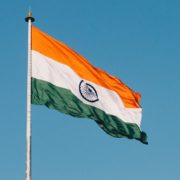
This article is copyrighted by ILW.COM and is republished here with permission.
The original article can be viewed here: http://discuss.ilw.com/articles/recent-issues/389787-december-31-eb-5-industry-misunderstands-retrogression
EB-5 Industry Misunderstands Retrogression
There is $3 Billion India EB-5 Opportunity:
India generated close to $500 million in EB-5 investments in 2018, and it is on track to generate $1 Billion in 2019 and $2 Billion in 2020. The Indian EB-5 market is a $3 Billion opportunity in the coming two years. USCIS published data on pending I-526 petitions showing that for the month of September 2018, India has already reached the number one position with 284 petitions compared to 165 from China and 137 from Vietnam.
Those Who Misunderstand Retrogression Will Miss the Opportunity:
Most of the EB-5 industry misunderstands how retrogression works. As a result, some in the EB-5 industry believe that the roaring number one EB-5 market in India will end as soon as retrogression hits sometime middle of 2019. They also incorrectly believe that as soon as retrogression in Indian EB-5 market begins, all waiting Indians will stand in line behind the Chinese who are standing in a 15+ year long line. Nothing could be farther from the truth.
Misunderstanding of how retrogression works is rampant in the EB-5 industry—Those who misunderstand retrogression will miss out on the $3 billion opportunity in Indian EB-5 market.
How Does Retrogression Work – Different Gates & Different Lines:
Each employment and family category has a total per year world limit, and an additional per country limit. There are separate gates for separate countries for each category of visa: People for each country who have applied for a given visa category are standing in separate lines by the date of their application.
To figure out retrogression:
First Step: first each country is allotted its per country quota.
Second step: If as a result of the first step the entire per year for the world is not exhausted, remaining visa numbers are allotted to the oldest applications regardless of the country.
Analogy: Think of there being separate gates for each country and those born in that country line up at the gate for their country. The length of the line for each country is different for each visa category. For example, the line at the gate for Chinese EB-5 applicants is very long, and the line for British EB-5 applicants is very short. When the per country quota is allocated, the countries with long lines budge a little but those with short lines gallop forward. The lines at the gates for each country for a given visa category move differently.
Further, as long as retrogression time for a country is shorter than the processing time for the application, it has no impact at all on the time it takes to get immigration benefits.
Lastly, the impact of a waiting time for a visa category is viewed differently by applicants of different countries because they compare the waiting time for that category with waiting times for other categories.
Example 1: EB-5 Waiting Times for India & China:
For EB-5 it is 10,000 visas/year and approximately 700 visas/country. Chinese EB-5 applicants are standing at a DIFFERENT gate in a DIFFERENT line than Indian EB-5 applicants.
To figure out retrogression, First Step: first each country is allotted its per country quota. For example, for EB-5, only China, India and Vietnam have more than 700 applications pending. Then first 700 oldest of Chinese applications, 700 oldest of Indian applications and 700 oldest of Vietnamese applications are allotted the visa numbers. Then applicants from all other countries are allotted their visa numbers. If as a result of the first step the entire per year for the world is not exhausted, remaining visa numbers are allotted to the oldest applications regardless of the country. For example, if 6,000 visas are allotted in the First Step for EB-5, 10,000-6,000=4,000 visas remain to be allotted. They are allotted to the oldest EB-5 applications waiting regardless of the country—which in this case would be the oldest Chinese EB-5 applications.
Result: Indians will not be in the line behind the Chinese—as with all categories, each country has its own line. For example, by using 700 visas will move the priority dates of the tens of thousands of Chinese waiting in line by barely few months, but the same 700 visa numbers will make the Indian priority dates gallop forward by more than a year. Therefore, hundreds of Indians will move ahead of the Chinese who have been waiting longer than those Indians.
Further, as long as retrogression time for a country is shorter than the processing time for the application, it has no impact at all on the time it takes to get immigration benefits. As long as the retrogressed time for India is less than 2 years, it will make no material difference to applicants if their processing time is average of 2 years. We expect the flow of Indian EB-5 capital to remain unaffected by retrogression until there are 12 consecutive months of retrogressed times higher than processing times–which has been the case for capital flows from China and Vietnam when the countries retrogressed.
Lastly, the waiting times for the EB-2 and EB-3 categories for Indian—the primary alternatives to EB-5—are 25 years and 75 years respectively looking forward. So even when EB-5 waiting times for India rise eventually to 5, 10 or 15 years EB-5 will continue to remain an extremely attractive option—unlike for the Chinese for whom the EB-2 and EB-3 times are much shorter.
Example 2: EB-3 Waiting Times for Philippines and India:
You can more clearly see the principle of “Separate Gates and Separate Lines for Each Country” by looking at other employment and categories which have been hitting their per country quotas for over a decade.
The priority dates for EB-3 are as follows as per December 2018 visa bulletin: India is Jan 2010, China is Dec 2015, Philippines is August 2017. So, the wait times are India 8 years; China 3 years and Philippines 1.5 years. This is because the number of Indians standing in the Indian EB-3 line is very large as compared to the number of Philippines nationals standing in the Philippines EB-3 line. This is true even though both Philippines and India have been in retrogressed territory for many years. Philippines nationals applying for EB-3 do NOT stand in line behind the Indians who have been waiting for years—each country has its own separate gate and a separate line.
Conclusion:
India is a $3 Billon opportunity over the next two years. India is 50+% of the entire world EB-5 market and growing at 100% per year. For all the reasons listed, retrogression will not affect capital flows of EB-5 capital out of India in that time frame. Do not miss out on the $3 Billion Indian EB-5 opportunity.
This article is copyrighted by ILW.COM and is republished here with permission.
The original article can be viewed here: http://discuss.ilw.com/articles/recent-issues/389787-december-31-eb-5-industry-misunderstands-retrogression

